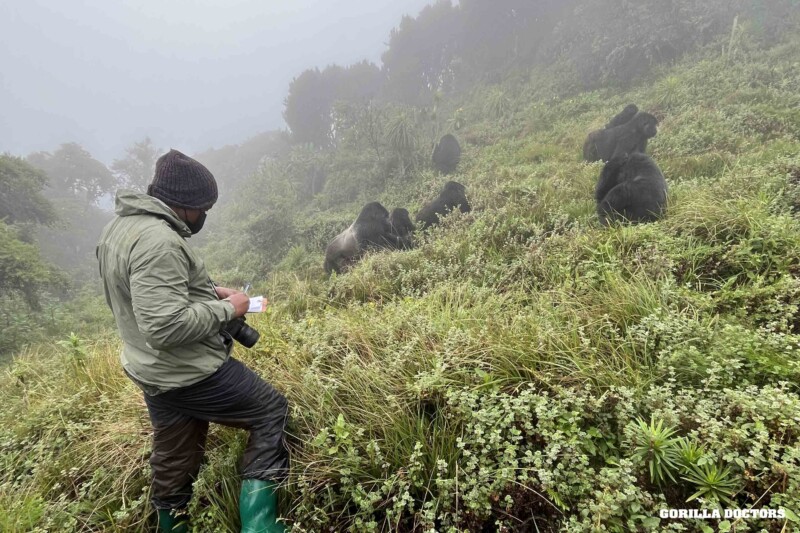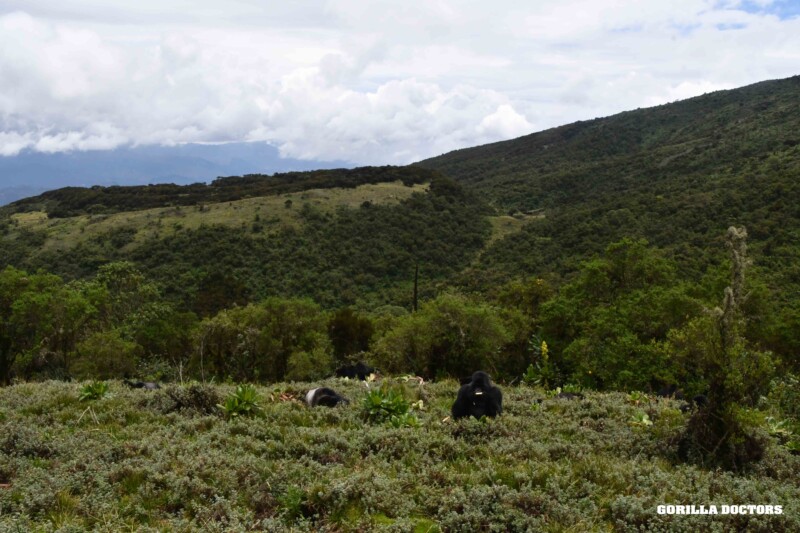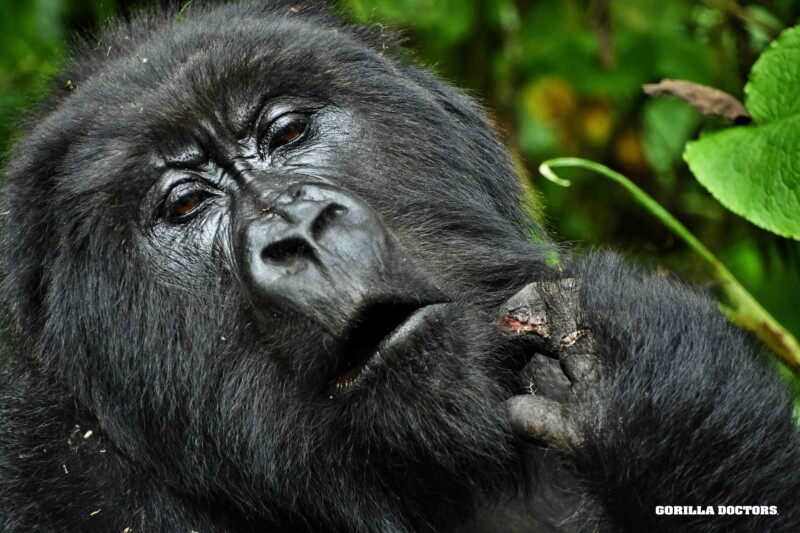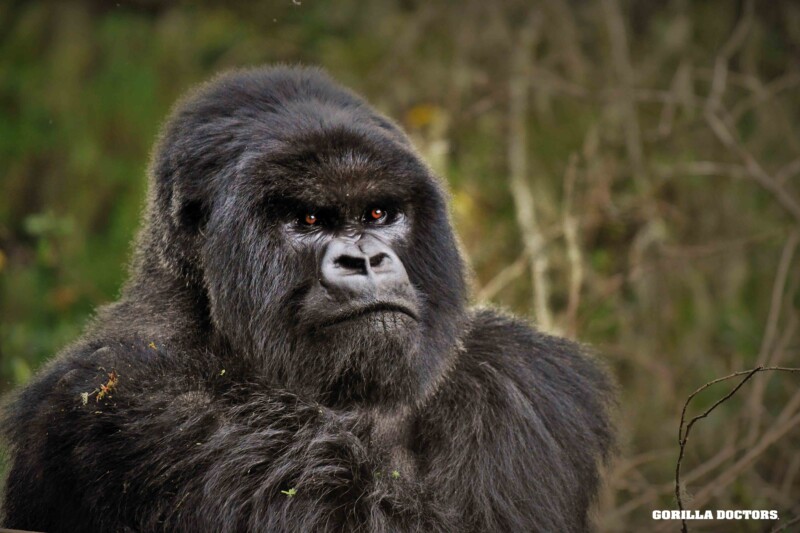Notes from the Forest: Checking on Mutobo Group
By Gorilla Doctors Staff on Tuesday, July 9th, 2024 in Blog.By Dr. Adrien Emile Ntwari, Field Veterinarian, Rwanda
Welcome to my first “Notes from the Forest” where we share our latest field updates on the health of endangered mountain gorillas and critically endangered Grauer’s (eastern lowland) gorillas. Where I work in Volcanoes National Park, on the Rwanda side of the Virunga Massif, we monitor the health of 24 families of human-habituated wild mountain gorillas.

Dr. Adrien conducts a health check on mountain gorillas in Volcanoes National Park, Rwanda. © Gorilla Doctors
I recently checked on the health of Mutobo group that ranges between Mt. Karisimbi and Mt. Bisoke. I love visiting this group because I will always remember the first time I met the lead silverback in 2019…
Keeping Mutobo Group Healthy
But on this recent health check in May 2024 – a lovely, sunny day – I embarked on a journey to conduct a routine health check of the 15 gorillas in the Mutobo group. I was accompanied by our veterinary interns Concorde Izere Rwibutso and Patience Karemera as well as a team of trackers and rangers. We began our day at 6:00 a.m. from our Regional Headquarters in Musanze, Rwanda, driving about an hour and a half to the starting point of our trek into the forest.

Dr. Adrien heading up the mountain to find gorillas, Volcanoes National Park, Rwanda. © Gorilla Doctors
It took us about 3-and-a-half hours to locate where the Mutobo group was ranging in the Bikereri area – an area dominated by a mixture of Hagenia and Hypericum vegetation at an altitude of over 3000m (~9,800ft).

Mountain gorillas feeding on high elevation vegetation in Volcanoes National Park, Rwanda, 2024. © Gorilla Doctors
We observed all 15 individuals: one silverback, eight adult females, two juveniles, and four infants. The gorillas’ overall health was visually good. A few individuals presented minor health issues, which seemed not to affect their overall activities, but I noted them in my records for us to keep an eye on.

Akaliza, an adult female mountain gorilla in Mutobo group. Resting and feeding during Dr. Adrien’s health check. Volcanoes National Park, Rwanda, 2024. © Gorilla Doctors
Mutobo the Fighter
I’ll never forget my first encounter with silverback Mutobo, the dominant male and leader of Mutobo group. Mutobo was born in 2004. I first met him in 2019. He was young and energetic. He was known to be a good fighter. When I checked on his health that first time in 2019, he had very serious wounds from a fight he had had with his elder brother, silverback Urugwiro, from whom Mutobo had recently ‘stolen’ four females.

Urugwiro, lead silverback of Urugwiro group, Volcanoes National Park, Rwanda, 2024. © Gorilla Doctors
This past March, silverback Mutobo was involved in another interaction with the Kureba group, and as result of this interaction, Mutobo added three more adult females to his group! Such behavior in our wild patients is normal and we do not interfere with it. But for the wounds, we monitor their healing progress to make sure that there is no infection. If a wound does become infected and potentially life-threatening, we can provide supportive therapy by delivering long-acting antibiotics and non-steroid anti-inflammatories remotely via dart.

Igitangaza, an adult female mountain gorilla in Mutobo group with a minor wound on her finger, Volcanoes National Park, Rwanda, 2024. © Gorilla Doctors
Saving a Species…One Gorilla at a Time
The beauty and growth (four infants!) of the Mutobo group reminds me of the importance of our continuous efforts in monitoring and safeguarding the health of these incredible gorillas by ensuring that they thrive in their natural habitat amidst ever changing environmental conditions.

Intarumikwa, an infant mountain gorilla in Mutobo group, Volcanoes National Park, Rwanda, 2024. © Gorilla Doctors


 Donate
Donate


